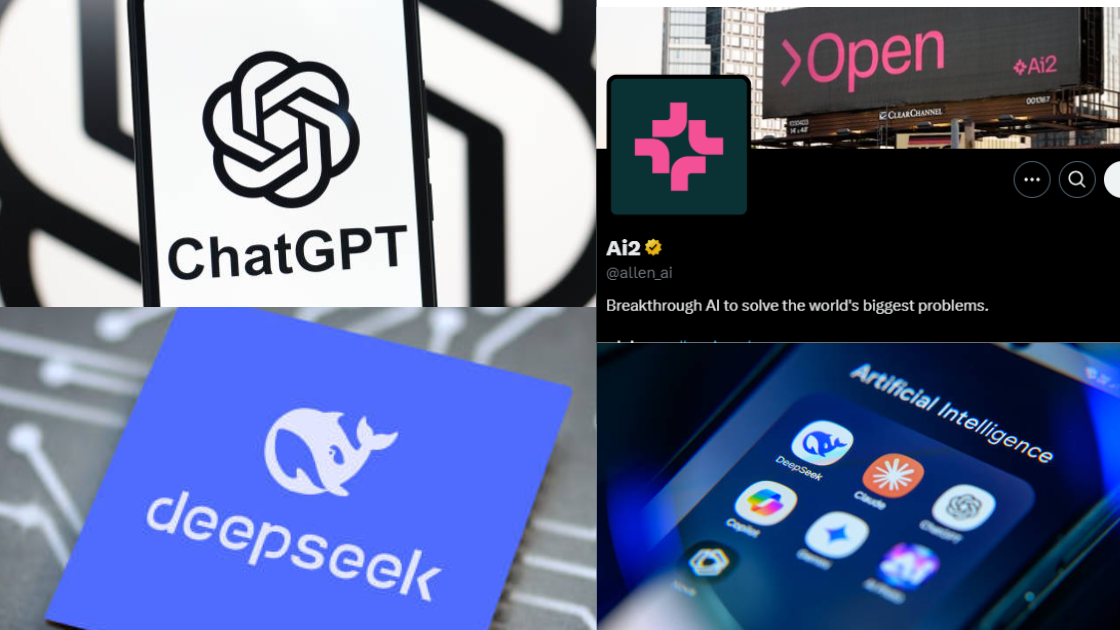Let's take a situation... After waking up one morning, you find that everything you thought you knew about AI dominance had changed overnight. OpenAI? No longer the king. DeepSeek? Outclassed. The battlefield has shifted, and a new challenger has emerged from the shadows, shaking the very foundations of artificial intelligence.
The Birth of a New AI Titan
Meet Tülu 3 445B, an AI so powerful that it has outperformed both DeepSeek and OpenAI's most advanced models across critical benchmarks. This isn't just an upgrade—this is the beginning of AI World War I.
It all started when DeepSeek, a Chinese AI startup, threw a grenade into OpenAI’s dominance by releasing a model as powerful as GPT-4 for free. But before DeepSeek could fully claim victory, a dark horse appeared: Tülu 3 445B, developed by AI2, an independent research lab in Seattle. This model isn't just good; it redefines what AI can achieve.
With 445 billion parameters and a cutting-edge training process, Tülu 3 is an open-source nightmare for the corporate AI giants. Unlike OpenAI’s walled garden, Tülu 3 is free for anyone to use, modify, and improve. The power of AI is no longer controlled by a handful of companies—and that terrifies them.
The War for AI Supremacy
Tülu 3 is already dominating the most critical AI benchmarks, proving that an independent, open-source AI can compete with, and even surpass, corporate AI monopolies. Here’s how it stacks up:
- GSM8K Benchmark: A test designed for grade-school-level math problems, where Tülu 3 outperformed all competitors.
- POPQA & MATH Benchmarks: These measure AI’s ability to reason and solve complex problems. Tülu 3 crushed DeepSeek V3 and GPT-4o in multiple tasks.
- Safety Tests: Unlike previous open models, Tülu 3 refuses harmful requests better than most proprietary models, proving that open-source AI can be both powerful and responsible.
But the real shock? Tülu 3 isn't even the biggest version yet. AI2 has hinted that even larger, more capable models are on the horizon. If this is just the beginning, what happens when AI2 drops its next-generation model? Will OpenAI and DeepSeek even survive?
Open-Source vs. Corporate AI: The Battle Intensifies
Tülu 3 is a direct threat to the business models of OpenAI and DeepSeek. Why? Because it's fully open-source. Not just the model—the training data, code, and instructions are all available for free. That means anyone can build upon it, tweak it, and create their own cutting-edge AI.
Compare that to OpenAI, which has become increasingly closed off and profit-driven. Their "open" days are long gone, with GPT-4o locked behind APIs and limited access. DeepSeek, while promising, still lacks the same level of transparency that Tülu 3 offers.
This isn’t just a fight over technology. It’s a war over ideology. Should AI be controlled by billion-dollar corporations, or should it be freely available to everyone?
AI2 has made its stance clear: AI should be open. And they’re proving that open-source doesn’t mean weaker models—it means better, more transparent AI that everyone can benefit from.
The Technology Behind the Revolution
Tülu 3’s success isn’t just hype. Its training methodology is a game-changer, using Reinforcement Learning with Verifiable Rewards (RVR). Unlike traditional AI training methods, which rely on human feedback, RVR only rewards the AI for getting objectively correct answers. This means the model isn’t just "guessing" what sounds right—it actually learns to reason and verify its outputs.
.png)
Other key factors that make Tülu 3 superior:
- Massive Training Infrastructure: Trained on 256 GPUs running in parallel across 32 nodes.
- Multi-Stage Learning: Uses supervised fine-tuning, direct preference optimization, and RLV to balance performance across knowledge recall, reasoning, coding, and safety.
- Decontaminated Data Pipeline: Ensures fair evaluation and prevents performance inflation due to data leakage.
Simply put, Tülu 3 is built differently.
What This Means for the Future of AI
The release of Tülu 3 signals a new era. AI is no longer just a corporate battleground; it’s now a global, open-source war. This could mean the end of monopolized AI as we know it.
- Corporate AI is under threat: OpenAI and DeepSeek now have to compete with free, open-source models that can match their best offerings.
- Developers and researchers have unprecedented power: With Tülu 3 freely available, anyone can experiment, improve, and integrate AI into their projects without paying for API access.
- The AI gap between nations could widen: With open models advancing at lightning speed, countries that embrace open-source AI could pull ahead in innovation, while those relying solely on corporate AI may fall behind.
And let's not ignore the geopolitical implications. AI is already shaping the world—from automated decision-making to warfare technologies. If AI2’s approach becomes the norm, it could completely disrupt the balance of power in AI research and development.
Tülu: A Symbol of Change
Even the name "Tülu" carries significance. It refers to a hybrid camel breed, a fusion of Bactrian and dromedary camels. In the same way, Tülu 3 represents a hybrid approach to AI development, blending the best of academic openness and cutting-edge AI advancements.
This isn’t just a new model; it's a statement. A declaration that AI should belong to everyone, not just a few Silicon Valley elites.
The Takeaway: The AI Revolution Has Arrived
Tülu 3 445B isn’t just another AI model—it’s a warning shot to the entire industry. OpenAI, DeepSeek, and every major AI corporation now have real competition, and it’s completely open-source.
This is AI World War I, and Tülu 3 just fired the first missile.
Are we witnessing the end of AI monopolies? Only time will tell. But one thing is certain:
The AI battlefield has changed forever.








